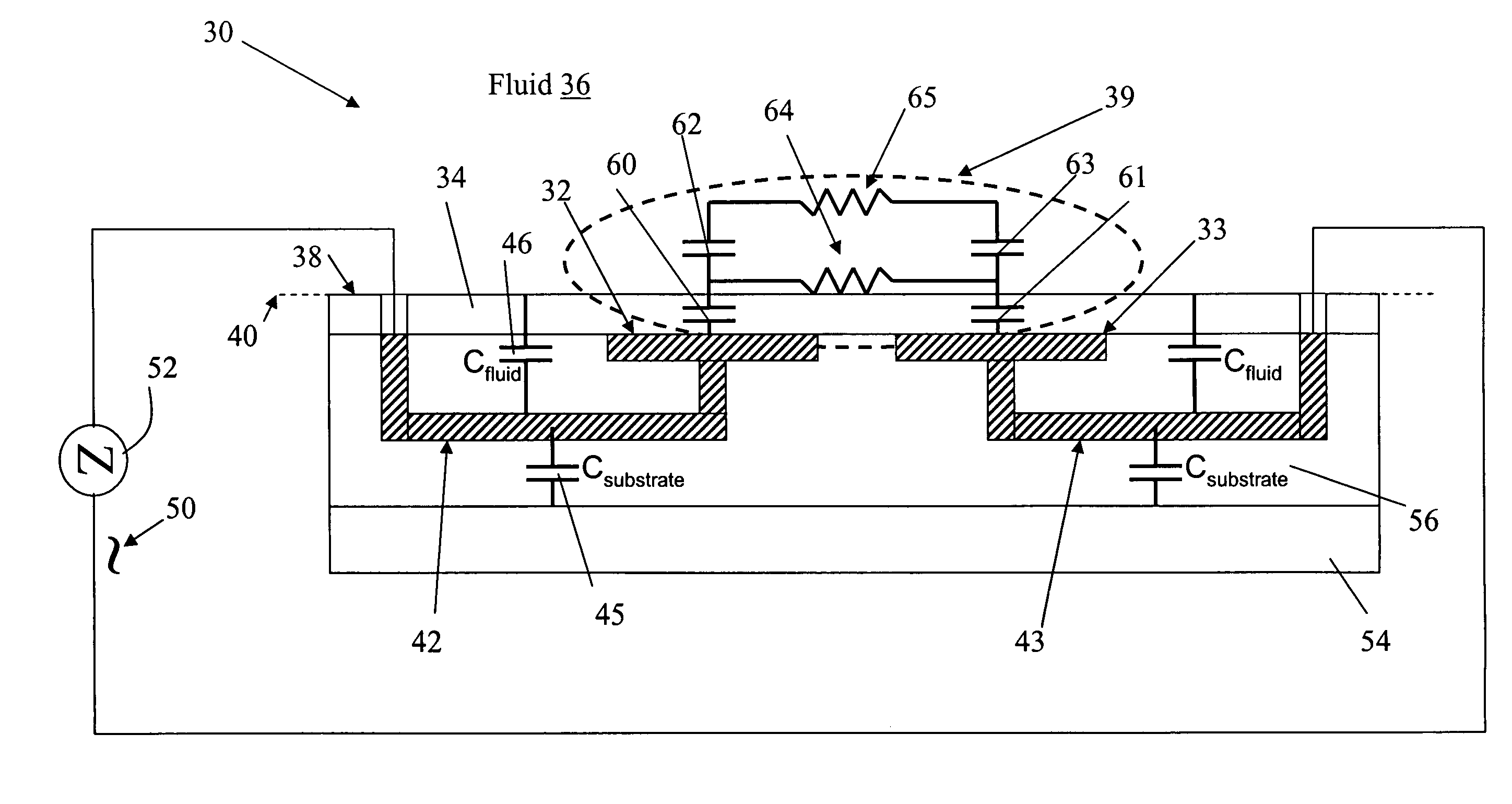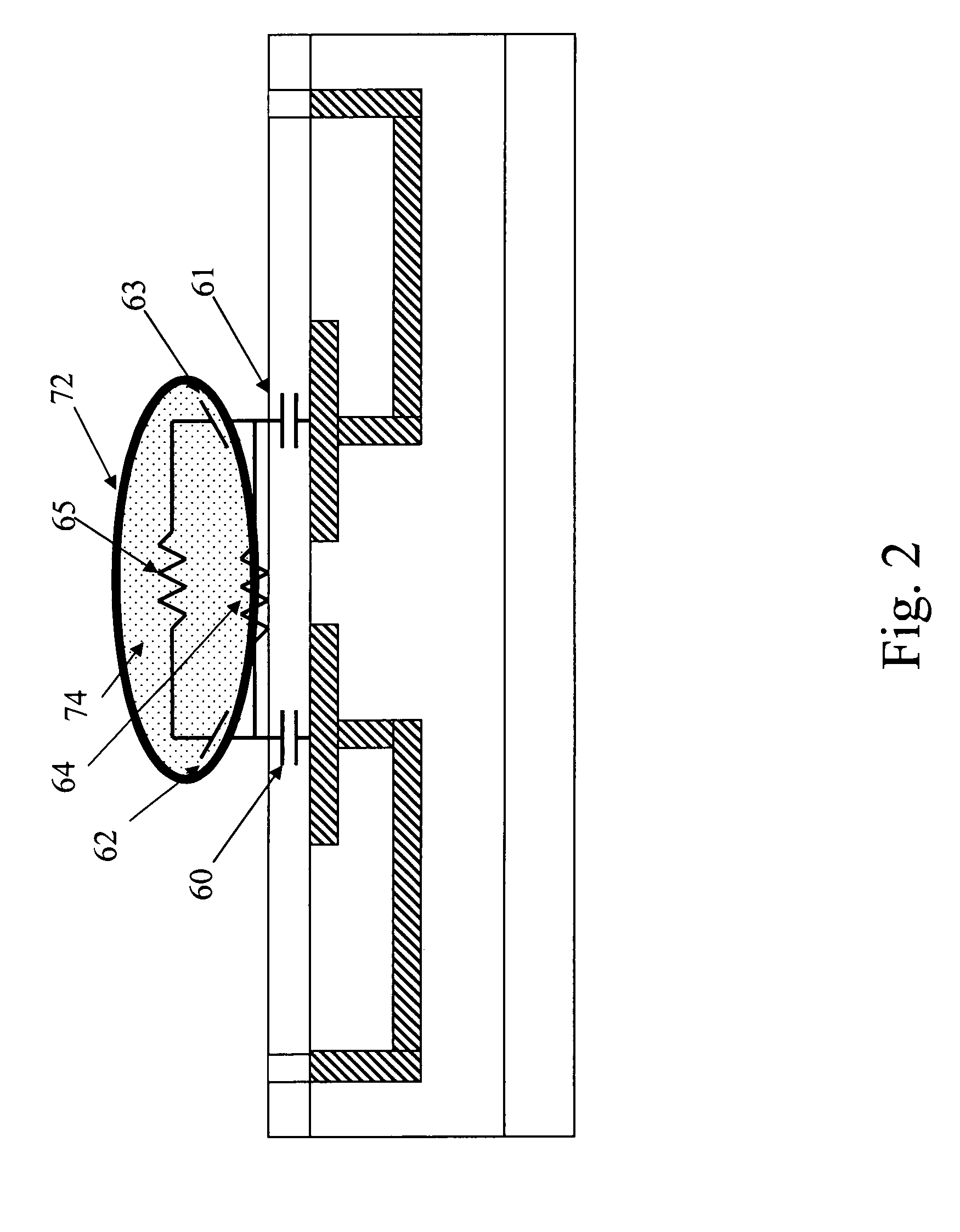Surface micro sensor and method
- Summary
- Abstract
- Description
- Claims
- Application Information
AI Technical Summary
Benefits of technology
Problems solved by technology
Method used
Image
Examples
Embodiment Construction
[0025]The present invention provides a surface micro sensor for monitoring the cleaning and drying processes on the surface of a dielectric film during the manufacture of ICs, MEMS and other micro devices. The surface of the dielectric can be non-porous, in which case the surface cleaning process is rate limited by the desorption of species from the surface or by removal of the species away from the surface. The dielectric can also be porous, or have other micro features present in it. Furthermore, a cell (biologic or other) may be placed on the surface and monitored.
[0026]As shown in FIG. 1, an exemplary embodiment of a surface micro sensor 30 for in-situ monitoring of the process of cleaning, rinsing and drying of surfaces and the micro features in those surfaces comprises two conducting electrodes 32 and 33 (e.g. copper or doped polysilicon with a typical thickness of 1 μm) that lie in the same plane, embedded in the surface of a supporting dielectric 56 on a substrate 54 (e.g. a...
PUM
 Login to View More
Login to View More Abstract
Description
Claims
Application Information
 Login to View More
Login to View More - R&D
- Intellectual Property
- Life Sciences
- Materials
- Tech Scout
- Unparalleled Data Quality
- Higher Quality Content
- 60% Fewer Hallucinations
Browse by: Latest US Patents, China's latest patents, Technical Efficacy Thesaurus, Application Domain, Technology Topic, Popular Technical Reports.
© 2025 PatSnap. All rights reserved.Legal|Privacy policy|Modern Slavery Act Transparency Statement|Sitemap|About US| Contact US: help@patsnap.com



